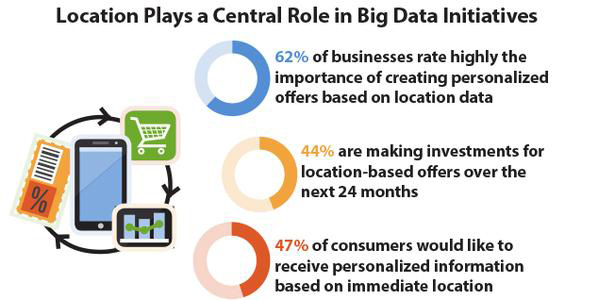
As technology weaves into our daily lives, our expectations of it continue to increase. Consider mobile devices and location information. Recently 451 Research released data that 47% of consumers would like to receive personalized information based on immediate location.

Addressing this requires the ability to track real-time and historical data and to put both in context. Let’s examine that spectrum.
Incoming High Value Content
With a focus on ‘immediate,’ the highest value content typically arrives via real-time streaming. This series of events must be capture and logged in a persistent datastore such as an operational database. It will always involve some type of transaction whether that is recording a data point and location, or completing a purchase.
Real-time activity gets us closer to the moment of truth, when a series of events trigger an offer that converts. Online advertising is the epitome of this moment. In a fraction of a second, online advertisers seek to understand who is viewing a page, segment and calculate what that visitor might be interested in, and subsequently present the most compelling (and perhaps top paying) offer.
Merging Real-Time and Historical Data
The moment at hand rarely completes the picture. Past activity helps determine the right information and offer. For example, did you visit a particular restaurant previously, did you rate it, and did your friends comment on it? Or what articles have you read in the past few weeks that would help refine an understanding of your most pressing interests?
These questions can be answered when real-time and historical data can be easily merged into a single question, or query, giving businesses the power to operationalize analytics.
Historical Data Retention
No one likes to throw data away. The upside of potential value tends to outweigh the challenge and cost of retention. But with incoming data volumes and accumulation, there needs to be an easy way to retain historical data, and to do so affordably.
Covering the Spectrum
At SingleStore, we work to help our customers cover the spectrum from high value to high volume data, as outlined in the following diagram:

A complete real-time data pipeline includes in-memory capabilities for streaming and transactions combined with disk-optimized solutions for historical data.
It further includes the ability to independently address and simultaneously work with both types of data in simple operations, such as a query across different types of tables in a database.
A Simple Software Approach
Today, many big data architects have to wrestle with numerous solutions to cover a spectrum like the one outlined above. Fortunately, with an in-memory database that also includes a disk-based column engine, a simplified approach is just a download away.
Give SingleStore a try for free or give us a call with any questions you have: (855) 463-6775





